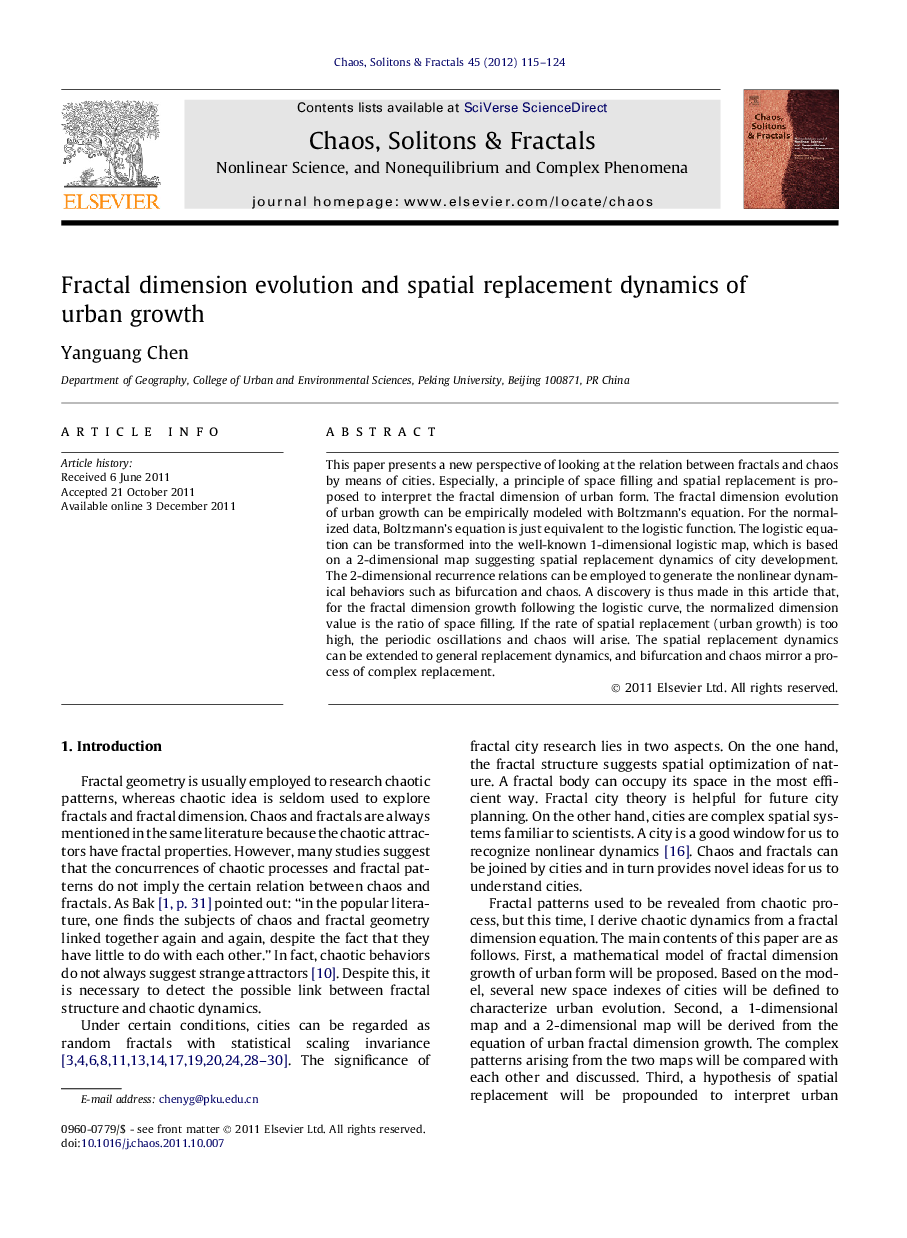| Article ID | Journal | Published Year | Pages | File Type |
|---|---|---|---|---|
| 1889645 | Chaos, Solitons & Fractals | 2012 | 10 Pages |
This paper presents a new perspective of looking at the relation between fractals and chaos by means of cities. Especially, a principle of space filling and spatial replacement is proposed to interpret the fractal dimension of urban form. The fractal dimension evolution of urban growth can be empirically modeled with Boltzmann’s equation. For the normalized data, Boltzmann’s equation is just equivalent to the logistic function. The logistic equation can be transformed into the well-known 1-dimensional logistic map, which is based on a 2-dimensional map suggesting spatial replacement dynamics of city development. The 2-dimensional recurrence relations can be employed to generate the nonlinear dynamical behaviors such as bifurcation and chaos. A discovery is thus made in this article that, for the fractal dimension growth following the logistic curve, the normalized dimension value is the ratio of space filling. If the rate of spatial replacement (urban growth) is too high, the periodic oscillations and chaos will arise. The spatial replacement dynamics can be extended to general replacement dynamics, and bifurcation and chaos mirror a process of complex replacement.
► The fractal dimension growth can be modeled by Boltzmann’s equation. ► Boltzmann’s model suggests urban spatial replacement dynamics. ► If the rate of urban growth is too high, periodic oscillations or chaos will arise. ► Chaos is associated with fractals by the fractal dimension evolution model. ► The fractal dimension of urban form implies the space-filling ratio of a city.
